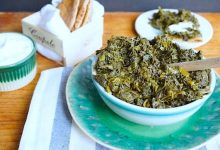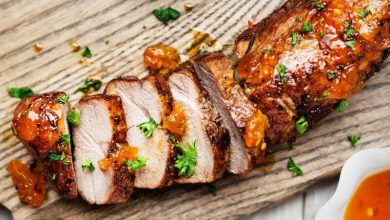🥗 Asian Cabbage Salad 🥗
History:
Asian Cabbage Salad is a fresh and vibrant dish that combines the flavors of Asia with the crunch of cabbage. While it’s not rooted in ancient history, it reflects the modern trend of fusion cuisine, which blends various culinary traditions. This salad is a versatile and popular choice in many parts of the world.
Components:
- Cabbage: The star ingredient, usually Napa cabbage or regular green cabbage, finely shredded.
- Vegetables: Carrots, bell peppers, and scallions are common additions, providing color and crunch.
- Proteins: Often, this salad features proteins like grilled chicken, shrimp, or tofu.
- Nuts and Seeds: Toasted sesame seeds or chopped peanuts for added texture.
- Dressing: A savory-sweet dressing, typically made with soy sauce, sesame oil, rice vinegar, ginger, and a touch of honey.
- Herbs: Fresh cilantro, mint, or basil for a burst of freshness.
- Optional Additions: Sliced water chestnuts, mandarin orange segments, or crispy wonton strips for extra flair.
Steps to Prepare:
- Chop and Shred: Begin by finely shredding the cabbage, julienning the carrots, and thinly slicing the bell peppers and scallions. You can also prep your protein at this stage.
- Toast the Nuts/Seeds: If using, toast the sesame seeds or peanuts in a dry pan until fragrant and lightly browned. Set them aside to cool.
- Prepare the Dressing: In a bowl, whisk together soy sauce, sesame oil, rice vinegar, grated ginger, and honey. Adjust the flavors to your liking, adding more soy sauce for saltiness or honey for sweetness.
- Assemble the Salad: In a large bowl, combine the shredded cabbage, carrots, bell peppers, scallions, and any optional additions you like.
- Add the Protein: If you’re including chicken, shrimp, or tofu, add it to the salad.
- Drizzle and Toss: Pour the dressing over the salad and toss everything together. Ensure an even coating.
- Garnish: Sprinkle with the toasted nuts or seeds and fresh herbs like cilantro, mint, or basil.
- Serve: Asian Cabbage Salad can be served immediately, but it’s often better when allowed to sit for 15-30 minutes to let the flavors meld.
Preparation Time:
- The time needed to prepare Asian Cabbage Salad can vary depending on your chopping and multitasking skills. On average, it takes about 20-30 minutes to prepare all the ingredients and assemble the salad. If you’re marinating and grilling a protein, add extra time for those steps.
This refreshing salad is a delightful combination of textures and flavors, making it a great choice for a healthy, quick, and delicious meal. Enjoy! 🥗😊
Certainly, here are the approximate nutrition facts and some health information for a typical serving of Asian Cabbage Salad:
Nutrition Facts (Per Serving, Approximately 1 cup):
- Calories: 100-150 calories (varies with dressing and protein)
- Protein: 2-5 grams (varies with protein choice)
- Carbohydrates: 15-20 grams
- Dietary Fiber: 3-5 grams
- Sugar: 6-8 grams (naturally occurring from vegetables and added sugars in dressing)
- Fat: 4-8 grams (mostly from the dressing and any nuts or seeds)
- Sodium: 300-500 milligrams (varies with soy sauce and dressing)
Please note that these values can vary significantly depending on the specific ingredients and portions used.
Health Information:
- Low in Calories: Asian Cabbage Salad is relatively low in calories, making it a suitable option for those looking to manage their weight.
- Rich in Fiber: The cabbage and vegetables in this salad provide a good amount of dietary fiber, promoting digestive health and helping you feel full.
- Nutrient-Rich: This salad is rich in vitamins and minerals, especially when you use a variety of colorful vegetables. It’s a good source of vitamins A and C, as well as antioxidants.
- Protein Source: Depending on the protein you add (tofu, chicken, shrimp, etc.), it can be a good source of protein, which is essential for muscle health and overall body function.
- Healthy Fats: The fats in the salad, particularly from the sesame oil and any added nuts or seeds, are generally heart-healthy monounsaturated and polyunsaturated fats.
- Watch the Dressing: Be mindful of the dressing, as it can contribute to extra calories and sodium. Opt for a lighter dressing if you’re watching your salt or sugar intake.
Remember that the nutrition content can vary based on the ingredients you use and the serving size. Additionally, you can further customize this salad to suit your dietary preferences and nutritional goals. Enjoy this healthy and flavorful dish! 🥗😊




